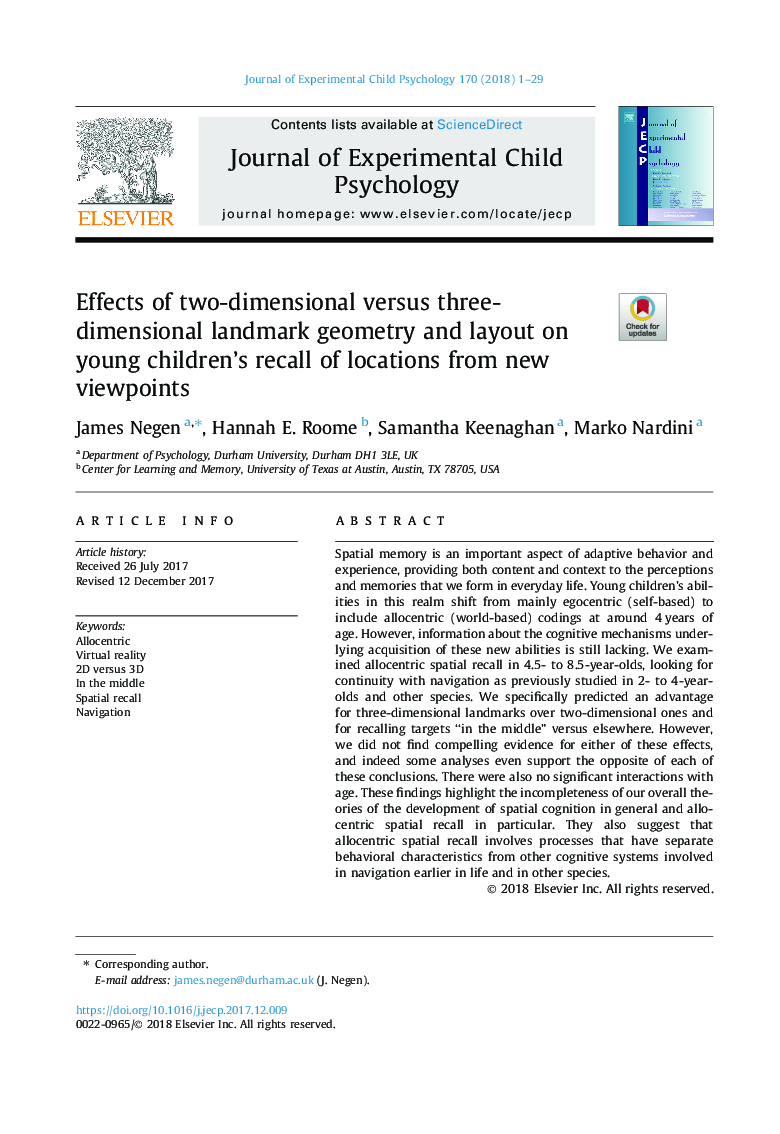| کد مقاله | کد نشریه | سال انتشار | مقاله انگلیسی | نسخه تمام متن |
|---|---|---|---|---|
| 7273982 | 1473442 | 2018 | 29 صفحه PDF | دانلود رایگان |
عنوان انگلیسی مقاله ISI
Effects of two-dimensional versus three-dimensional landmark geometry and layout on young children's recall of locations from new viewpoints
ترجمه فارسی عنوان
اثرات هندسه دو بعدی و سه بعدی هندسه و طرح بندی بر یادگیری کودکان در مکان های مختلف از دیدگاه های جدید
دانلود مقاله + سفارش ترجمه
دانلود مقاله ISI انگلیسی
رایگان برای ایرانیان
موضوعات مرتبط
علوم انسانی و اجتماعی
روانشناسی
روانشناسی رشد و آموزشی
چکیده انگلیسی
Spatial memory is an important aspect of adaptive behavior and experience, providing both content and context to the perceptions and memories that we form in everyday life. Young children's abilities in this realm shift from mainly egocentric (self-based) to include allocentric (world-based) codings at around 4â¯years of age. However, information about the cognitive mechanisms underlying acquisition of these new abilities is still lacking. We examined allocentric spatial recall in 4.5- to 8.5-year-olds, looking for continuity with navigation as previously studied in 2- to 4-year-olds and other species. We specifically predicted an advantage for three-dimensional landmarks over two-dimensional ones and for recalling targets “in the middle” versus elsewhere. However, we did not find compelling evidence for either of these effects, and indeed some analyses even support the opposite of each of these conclusions. There were also no significant interactions with age. These findings highlight the incompleteness of our overall theories of the development of spatial cognition in general and allocentric spatial recall in particular. They also suggest that allocentric spatial recall involves processes that have separate behavioral characteristics from other cognitive systems involved in navigation earlier in life and in other species.
ناشر
Database: Elsevier - ScienceDirect (ساینس دایرکت)
Journal: Journal of Experimental Child Psychology - Volume 170, June 2018, Pages 1-29
Journal: Journal of Experimental Child Psychology - Volume 170, June 2018, Pages 1-29
نویسندگان
James Negen, Hannah E. Roome, Samantha Keenaghan, Marko Nardini,
